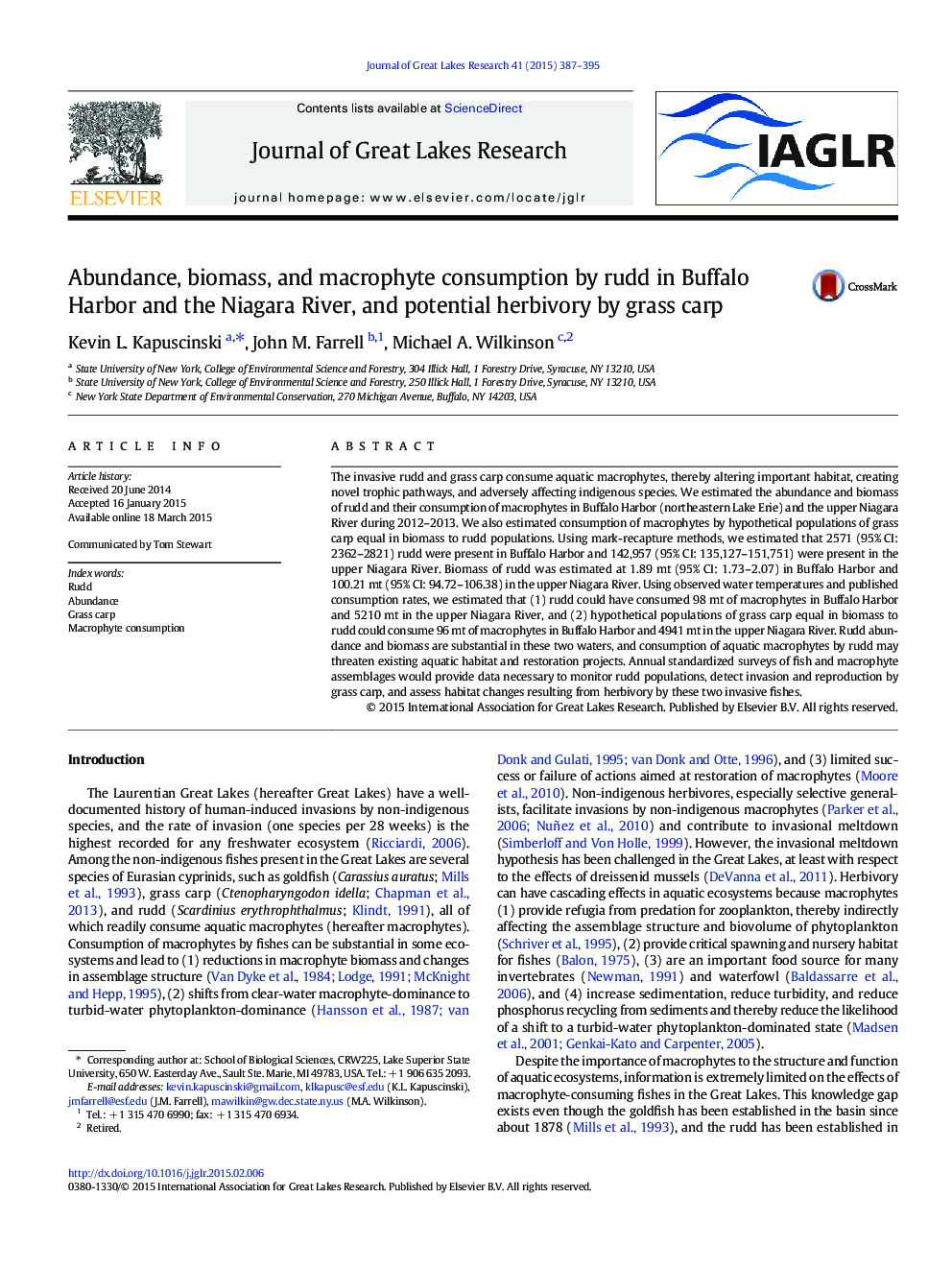| Article ID | Journal | Published Year | Pages | File Type |
|---|---|---|---|---|
| 6304998 | Journal of Great Lakes Research | 2015 | 9 Pages |
Abstract
The invasive rudd and grass carp consume aquatic macrophytes, thereby altering important habitat, creating novel trophic pathways, and adversely affecting indigenous species. We estimated the abundance and biomass of rudd and their consumption of macrophytes in Buffalo Harbor (northeastern Lake Erie) and the upper Niagara River during 2012-2013. We also estimated consumption of macrophytes by hypothetical populations of grass carp equal in biomass to rudd populations. Using mark-recapture methods, we estimated that 2571 (95% CI: 2362-2821) rudd were present in Buffalo Harbor and 142,957 (95% CI: 135,127-151,751) were present in the upper Niagara River. Biomass of rudd was estimated at 1.89Â mt (95% CI: 1.73-2.07) in Buffalo Harbor and 100.21Â mt (95% CI: 94.72-106.38) in the upper Niagara River. Using observed water temperatures and published consumption rates, we estimated that (1) rudd could have consumed 98Â mt of macrophytes in Buffalo Harbor and 5210Â mt in the upper Niagara River, and (2) hypothetical populations of grass carp equal in biomass to rudd could consume 96Â mt of macrophytes in Buffalo Harbor and 4941Â mt in the upper Niagara River. Rudd abundance and biomass are substantial in these two waters, and consumption of aquatic macrophytes by rudd may threaten existing aquatic habitat and restoration projects. Annual standardized surveys of fish and macrophyte assemblages would provide data necessary to monitor rudd populations, detect invasion and reproduction by grass carp, and assess habitat changes resulting from herbivory by these two invasive fishes.
Keywords
Related Topics
Physical Sciences and Engineering
Earth and Planetary Sciences
Earth and Planetary Sciences (General)
Authors
Kevin L. Kapuscinski, John M. Farrell, Michael A. Wilkinson,
